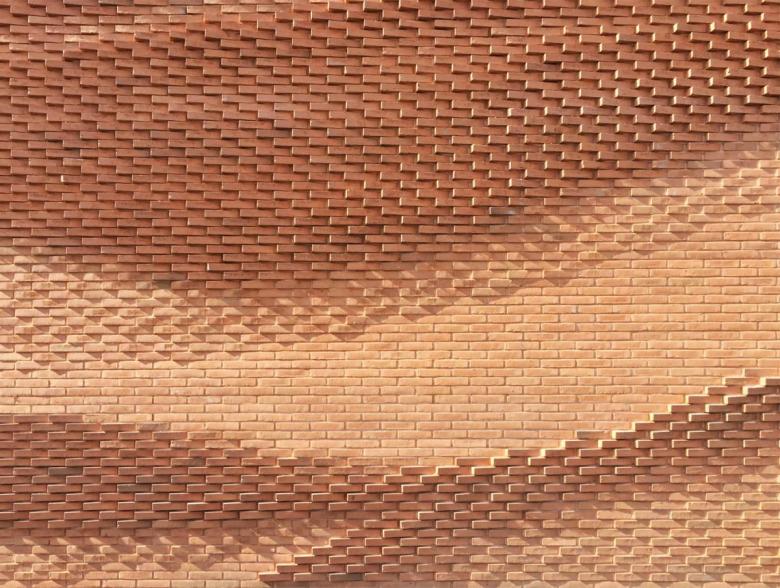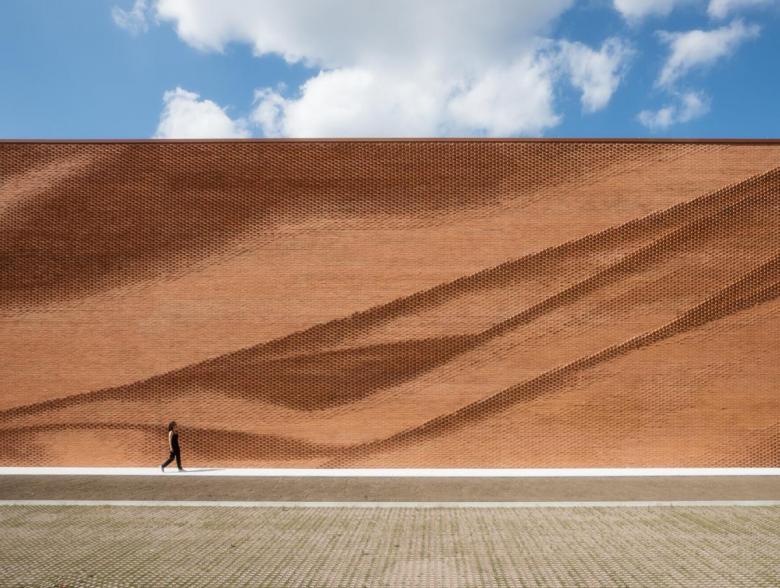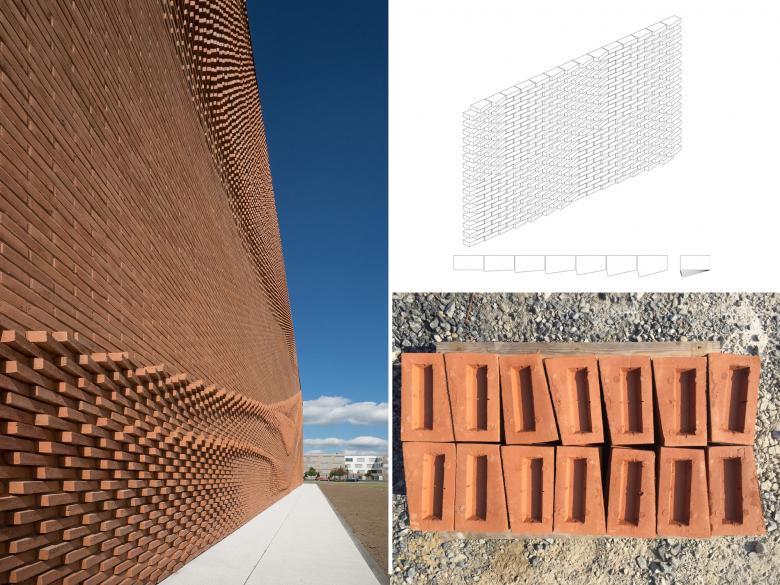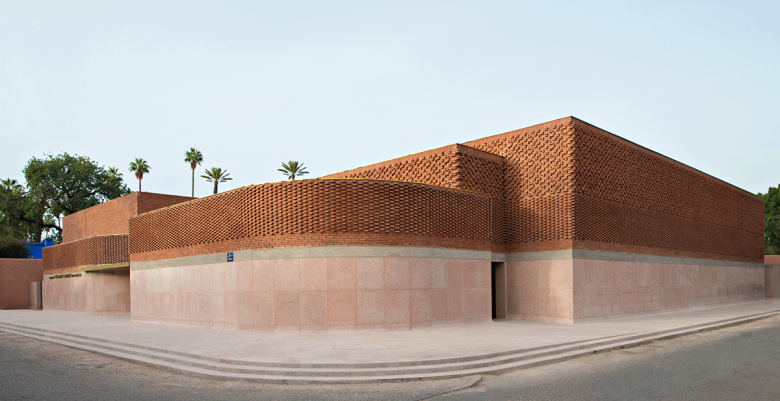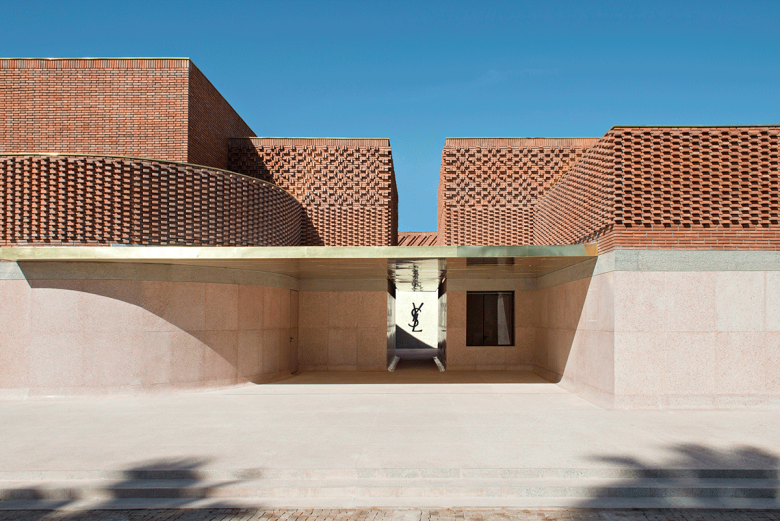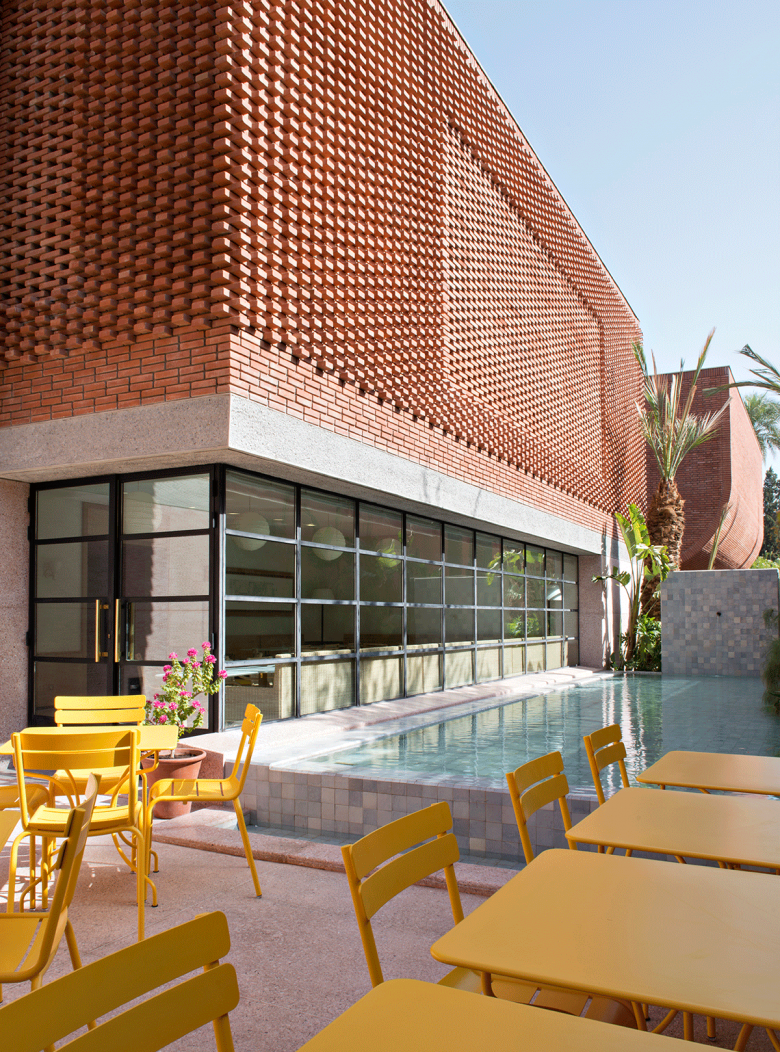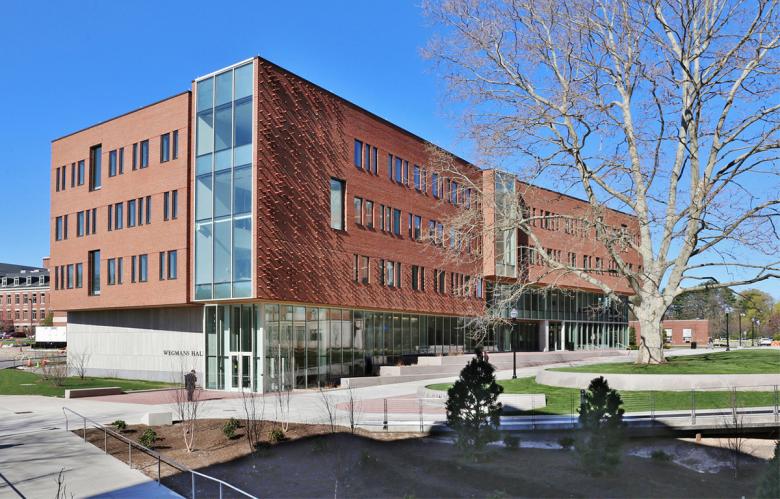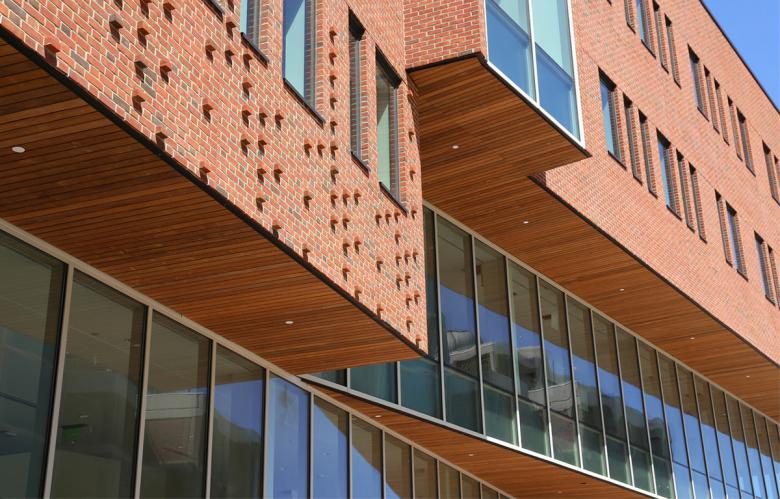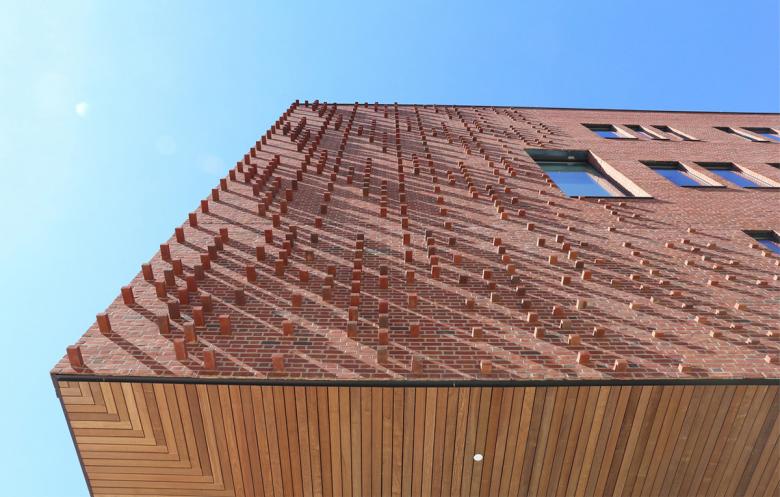Innovations in Textured Brick
John Hill
10. November 2017
Verbandsgebäude der Nordwestdeutschen Textil- und Bekleidungsindustrie (Photo: behet bondzio lin architekten)
A few recently completed buildings share a predilection for creating textured surfaces from that most humble and rectilinear of materials: brick.
The first building is the Verbandsgebäude der Nordwestdeutschen Textil- und Bekleidungsindustrie (administration building for the Northwest German Textile and Clothing Industry) in Münster, Germany, featured as a Building of the Week at German-Architects. For programmatic reasons, the rectilinear office building makes three exposures solid, while the north side is fully glazed. The three solid sides are covered with red bricks, which were stacked to resemble, suitably, a flowing textile. Behet bondzio lin architekten were inspired by Max Klinger's early-twentieth-century statue of Beethoven at the Museum der bildenden Künste Leipzig, in which stone is carved to resemble a draped scarf.
Verbandsgebäude der Nordwestdeutschen Textil- und Bekleidungsindustrie (Photo: Thomas Wrede)
To pull off the textile appearance, brick manufacturer Deppe Backstein-Keramik supplied seven brick types: one standard and six of varied angles. Masons placed the bricks based on a numbered key corresponding to the seven brick types. These shapes maintain a flat face at the rear of the brick wall, while the angled fronts take advantage of the sunlight hitting their surfaces. The flowing effect is enabled by the custom bricks, but as the photo above reveals, ultimately it's about the shadows created rather than the bricks themselves.
Verbandsgebäude der Nordwestdeutschen Textil- und Bekleidungsindustrie (Images: behet bondzio lin architekten)
Musée Yves Saint Laurent (Photo: Nicolas Mathéus)
Also meant to evoke fabric is the Musée Yves Saint Laurent, which opened last month in Marrakech close to the Jardin Majorelle that was acquired by Yves Saint Laurent and Pierre Bergé in 1980. Saint Laurent died in 2008 and Bergé in early September of this year, just shy of the museum's opening. The museum includes a permanent exhibition devoted to the work of Yves Saint Laurent as well as a hall for temporary exhibitions, a research library with over 5,000 volumes, a 140-seat auditorium, bookshop and terrace café.
Musée Yves Saint Laurent (Photo: Nicolas Mathéus)
According to the museum's website, French architects Karl Fournier and Olivier Marty of Studio KO "became intrigued by the duality between curved and straight lines, and between loose and precise approaches to cutting fabric" while digging through Saint Laurent's archives. Therefore, "The facade of the building appears as an intersection of cubes with a lace-like covering of bricks, creating patterns that recall the weft and warp of fabric." The terracotta bricks, oriented flat and turned 90 degrees, were locally produced, further giving the building a certain Marrakesch flavor.
Musée Yves Saint Laurent (Photo: Nicolas Mathéus)
Wegmans Hall, University of Rochester (Photo courtesy of KVA)
Bricks rotated ninety degrees are also evident at Wegmans Hall, the new home for the Goergen Institute for Data Science at the University of Rochester in Upstate New York. But instead of a regular pattern, as in Marrakesch, Kennedy & Violich Architecture (KVA) opted for what they describe as a "data-driven design" that yields a varied layout and more "dynamic reading of depth and texture." Much as the windows of the building were inspired by old punch cards, the south-facing brick wall above the building's entrance looks like some sort of binary configuration. This so-called digital approach recalls KVA's earlier Tozzer Anthropology Building at Harvard University, where brick courses are progressively shifted to create angled surfaces.
Wegmans Hall, University of Rochester (Photo courtesy of KVA)
Given Wegmans Hall's southern exposure, the projecting bricks aim to create a dynamic display of shadows, longest near the corner and progressively shorter toward the windows. The brick veneer is laid in a Flemish bond pattern, which alternates wide and narrow faces; where narrow, the bricks project in one of four depths. The deepest, evident in the photo below, clearly illustrate the atypical construction required. To keep these cantilevered bricks from tipping while the mortar set, temporary wood blocks were set on the cantilevered brick below it. With the time and effort required to pull this off, it's understandable that the brick texture is a punctuation mark on one part of the building, rather than a pattern that wraps the whole envelope.
